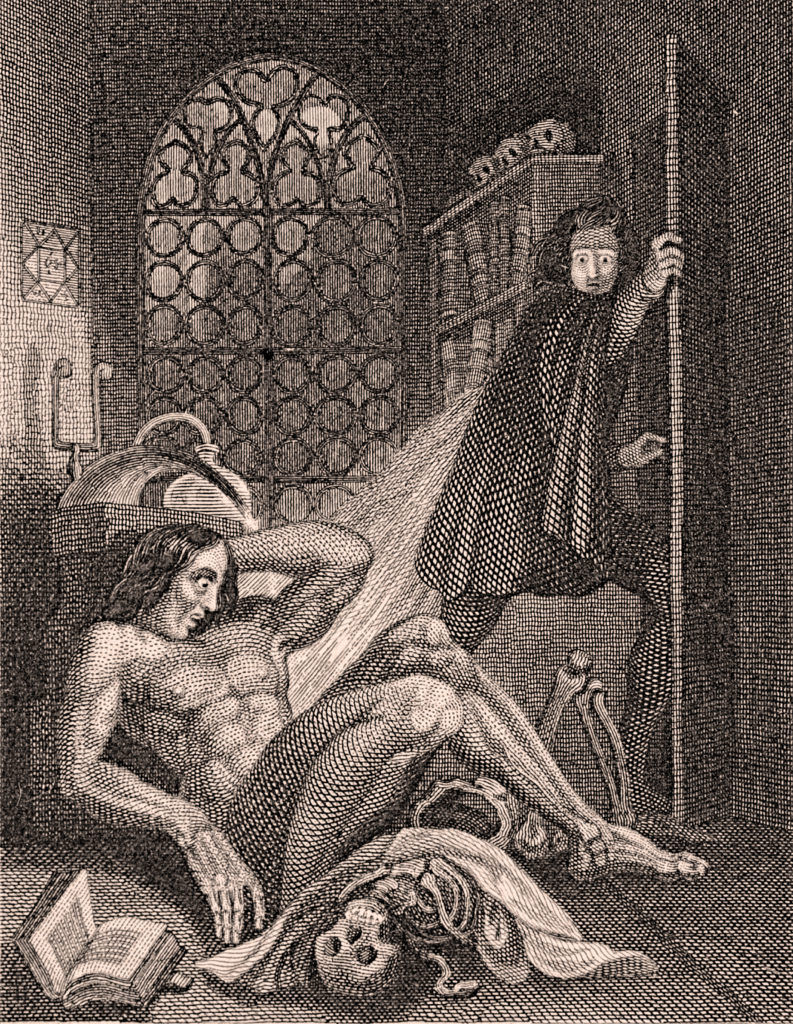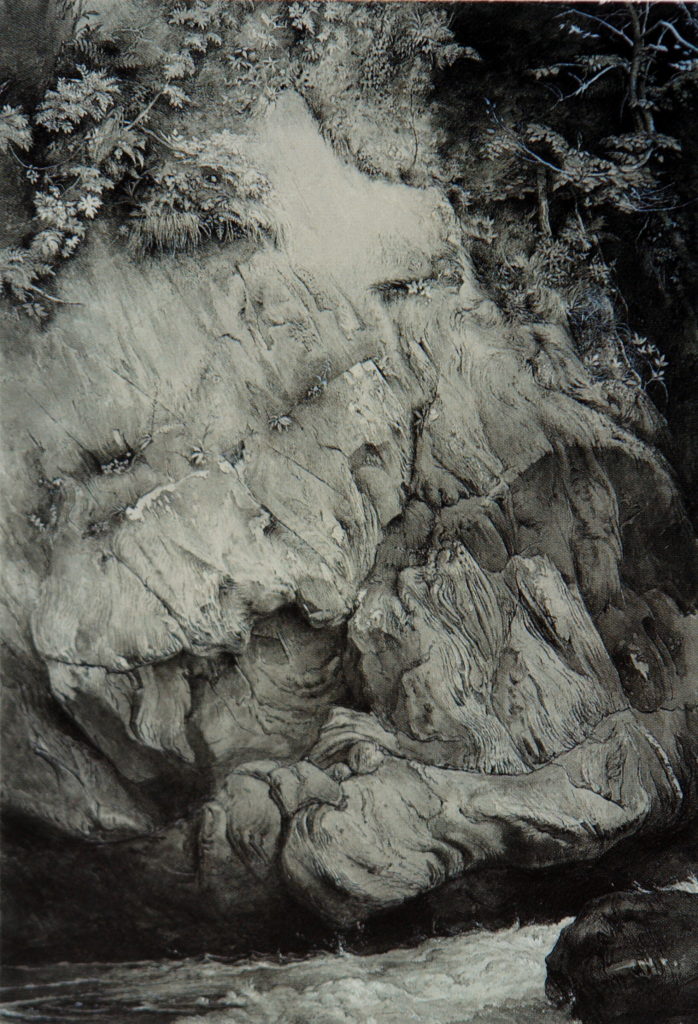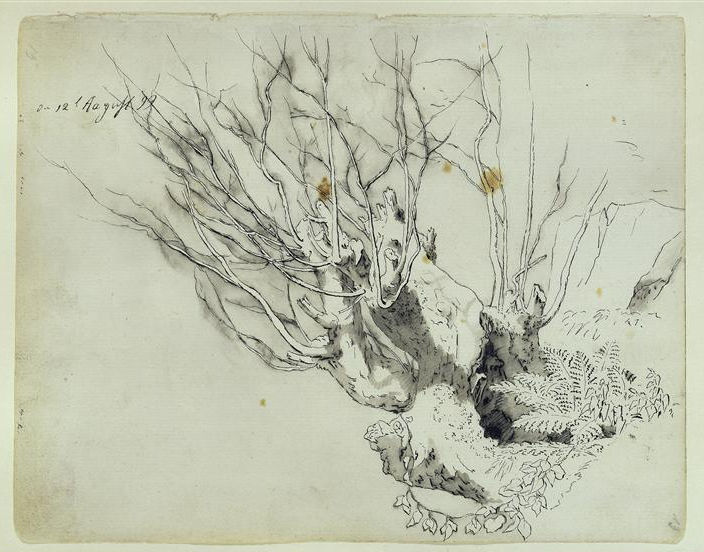Romantic Science, the Existence of Souls, and Nature’s Truth
In our contemporary society, science is rarely considered “romantic.” Conventionally considered as objective, clear, and methodical, science is usually seen as incompatible with art and faith (at least in their idealized, non-commercial, and non-politicized forms). Art and faith are considered more subjective, fluid, and ambiguous. However, in the age of Romanticism, science was sentimental and subjective, and was simultaneously inseparable and at tensions with religious faith.
This is part 3 of a 4-part blog series that eventually got published as the article “The Romantic landscape: A Search for Material and Immaterial Truths through Scientific and Spiritual Representation of Nature” in the Athens Journal of Humanities and Art (2020). An older version of this post was originally published on an old blog from 2017.
Seeking the truth of the world through Romantic science
In part 1, I explored Romanticism as the search for divine truth in the form of human creativity. The representation of the sublime in landscape painting, shown in Part 2, was one way of expressing this human creativity. In this post, science is shown as an alternative path to truth during the age of Romanticism.
For pantheistic or panentheistic Romantic scientists, science was viewed as a mission for truth: the truth behind God’s design of nature. But despite this social doctrine to find divinity through nature, some Romantic scientists were intrigued by the idea of a purely atheistic and scientific world. But this position offended both believers of traditional faith and those who put their faith into divine nature.
These individuals became the archetype for today’s stereotypical scientist, one who would argue that mysticism is ignorance and that all knowledge was within the grasp of human discovery. For example, English surgeon William Lawrence, who was seen as radical in his time, declared that science “must avoid ‘clouds of fears and hopes, desires and aversions.’ It must ‘discern objects clearly’ and shun ‘intellectual mist.’ It must dispel myth and dissipate ‘absurd fables’” (Holmes 2008, 313).
Frankenstein: the soul and the morality of science
William Lawrence was a key player in what was known as Britain’s first scientific controversy (Holmes 2008). The dispute, known as the Vitalism Debate, was concerning Lawrence’s senior colleague, John Abernathy’s life force theory, which suggested that magnetism-like souls existed in organisms.
This controversy over animal vitalism extended beyond scientific circles and into art and literature. Likely, the contrast between material science and the Romantics non-material idealism for society, morality, and culture, particularly regarding the existence of things like “souls”, was what triggered Mary Shelley’s idea for her famous novel Frankenstein or the Modern Prometheus (1818).
Lawrence was Mary Shelley’s husband, Percy Shelley’s physician, which suggests that he may have been the prototype for Victor Frankenstein. However, Holmes (2008) suggests that German physiologist Johann Wilhelm Ritter was more likely the inspiration for Shelley’s renowned character since Ritter had just invented a dry-cell voltaic battery to experiment on the galvanic properties of animals.
Nevertheless, Frankenstein was one of the earliest examples of how science fiction could cast critical doubt towards humanity’s behaviours. In its story, inquisitive questions were asked: Do souls exist? If they do, can they be created? If something like souls can easily be created, what kind of horror looms behind the physical potentials and moral limitations of human’s ability to use science to manipulate nature? And not surprisingly, these questions are still ones we grapple with today.

Representing the scientific truth of nature in art
While we can continue to debate over whether science and faith is more superior than the other, the purpose of this post is not about oppositions. The controversies behind the Vitalism Debate and Frankenstein are interesting to me not because they help us determine whether objective science or divine faith can get us closer to nature’s “truth”, but rather, because the controversies brought about new desires and approaches to representation in art.
For some individuals, objectivity and faith were essentially two-sides of the same coin. For example, Victorian art critic John Ruskin ([1845], 1987) believed that the Old Masters of classical landscape paintings failed in attaining “truth” because they neglected to properly observe and render these truths of nature in their art. This failure, for Ruskin, was equivalent to disrespecting nature, and consequently., God.
Therefore, the mechanical vision and impartiality of the scientific process was seen by many Romantics as appropriate in both understanding and representing nature. For Romantic artists, this objective observation was a form of respect for the laws of nature. This approach to represent nature truthfully became the style of naturalism.
The naturalistic style, which was not uniform in presentation, relied on practical views and experimentation on varying techniques of observation and representation. Even artists such as Caspar David Friedrich and J.M.W. Turner, whose works are not characteristically naturalistic, were careful in observing and representing the material aspects of nature accurately. This is likely because Friedrich had worked as a topographic draftsman (Vaughan 1978), and Turner had worked as an architectural draftsman before establishing their careers in landscape painting (The Met’s Heibrun 2016).


Shifting narratives of the world
Nevertheless, as the ambitions to know more about the world through science increased, the relevance of religious narratives to explain the world also decreased. Since scientific discoveries were able to give people different perspectives about the world, alternative narratives for nature’s origin outside of being God’s design was also available. Science was able to explain and analyze the intangible and the ephemeral, as well as minuscule and far-distant entities. Therefore, what was once a mystery became fact across the scales of nature, from a small and familiar leaf to telescopic celestial bodies of moons and planets.
So while Romantic science was viewed as “a gift of God or Providence to mankind…to reveal the wonders of His design” (Holmes 2008, 450), science also unconcealed the expanding capacity of human control over nature. For better or for worse, science has, for the most part, taken over today’s world. But the balance between spirituality, wonder, and truth can still be found in Romantic landscapes. Examples of the merging of science and faith in representations of nature will be presented in the final post for this series.
References:
- Holmes, Richard. 2008. The Age of Wonder: How the Romantic Generation Discovered the Beauty and Terror of Science. New York: Vintage Books.
- Ruskin, John. (c. 1845) 1987. Modern Painters. Ed. by David Barrie. New York: Knopf.
- Joseph Mallord William Turner (1775-1851),” The Met’s Heibrunn Timeline of Art History. 2016.
- Vaughan, William. 1978. Romantic Art. New York: Oxford University Press.





